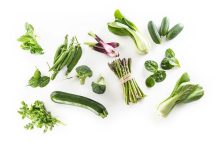
A recent study helmed by scientists from the University of Aberdeen, including Dr. Constanze Hesse, has spotlighted a pivotal factor that might ramp up the appeal of healthy foods and potentially dampen cravings for high-calorie snacks.
The study, published in the journal Food Quality and Preference, focused on the impact of ‘readiness-to-eat’ on food cravings.
Findings: Immediate Edibility Ups Food Appeal
The research underscored that instantly edible foods were roughly 15% more enticing compared to those requiring even minimal preparation—whether it be cooking, peeling, or merely extracting from a package.
This finding held true across various food types, including meat, fruits, vegetables, chocolate, and crisps, revealing that cravings intensified for immediately consumable foods.
For instance, a peeled orange sparked stronger cravings compared to its unpeeled counterpart, and a sealed bag of chips was less craved than an open one.
Methodology: Visuals and Cravings
The study enlisted over 200 volunteers, exposing them to images of foods in varied states of preparedness, and subsequently asking them to rate their craving levels.
Various food comparisons were employed, such as a raw piece of salmon vs. a cooked one, and a whole, unpeeled pineapple vs. a chopped one.
Despite the well-established link between higher-calorie foods and elevated cravings from previous research, this study unfolded an intriguing finding: cravings surged for foods that were immediately consumable, irrespective of the need to cook, chop, peel, or unwrap them.
Hierarchies and Hunger Levels
A notable gradation was observed in cravings, with the most significant difference arising when comparing raw to cooked foods.
This was followed by disparities between unpeeled or packaged vs. peeled or unpackaged foods, and subsequently, chopped vs. unchopped foods.
Furthermore, an amplification of the ‘readiness to eat’ effect was noted in individuals experiencing higher levels of hunger.
Applications: Shaping Healthy Eating Campaigns
This research paves the way for intriguing applications, particularly in the realm of promoting healthy eating.
With the fast-food industry seemingly capitalizing on this ‘readiness to eat’ allure, public health campaigns could similarly harness this insight.
Utilizing images of ready-to-eat healthy foods in advertising efforts could bolster their appeal, fostering healthier food choices among the public.
More Nutritional Insights
For those keen on diving deeper into nutritional research, further readings might explore studies centered on foods that might enhance survival rates in Parkinson’s disease and the role of vitamin D supplements in significantly reducing cancer mortality.
Other nutritional investigations spotlight plant nutrients that could aid in mitigating high blood pressure and antioxidants potentially playing a role in diminishing dementia risk.
Final Thoughts
Navigating through the intricate landscape of food cravings and nutritional choices, this study offers a novel lens through which to view and possibly influence food preferences, presenting a potentially fruitful avenue to explore in future public health and nutritional endeavors.
Follow us on Twitter for more articles about this topic.
Copyright © 2023 Scientific Diet. All rights reserved.








